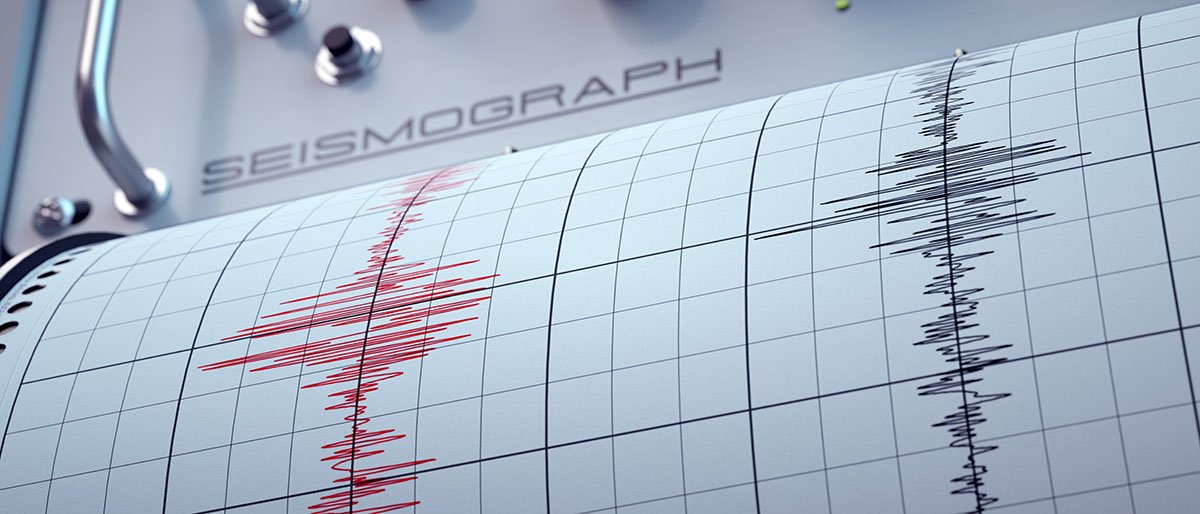Professor MacAvoy on the Science of Earthquakes

Earthquakes seem to strike when we least expect them. Last week’s earthquake that rattled residents in New York and New Jersey was no exception. It measured 4.8 in magnitude, with its epicenter in Lebanon, New Jersey. Shaking was felt in New York City—and as far away as Boston and Philadelphia. So far, there have been more than three dozen smaller aftershocks, and experts say more could be on the way.
We asked Environmental Science Professor Stephen MacAvoy to explain some of the dynamics of earthquakes—and exactly how these seismic events unfold.
Q. How does an earthquake occur?
A. The surface of the earth is broken into about 14 major plates (and many minor ones). These plates are always on the move, and most earthquakes occur along their edges as they run into, slide past, or separate from each other. The plates are pushed around by convection currents in the mantle, which moves them between 2 and 20 cm per year. Frequently, the sliding plates “lock up” and bend as pressure builds up. Earthquakes are the sudden release of that pressure.
Q. So, what determines the strength of an earthquake?
A. The strength of the quake depends on how much energy is released, but also the amount of earth movement and the depth of the quake.
Q. Do global warming and climate change affect earthquakes?
A. Earthquakes are not influenced by climate change although the plate tectonics, of which earthquakes are a manifestation, can impact climate over vast periods of geological time.
Q. In February 2023, a magnitude 7.8 earthquake occurred in southern Turkey near the border of Syria. It was the most devastating earthquake in Turkey in more than 20 years, and it killed more than 55,000 people. Can you explain what happened?
A. The earthquake that stuck Turkey and Syria in 2023 was a shallow one (17 km below the surface) with a magnitude of 7.8, and it had major impacts along a 190 km by 25 km area.
The area around Turkey is very geologically active. There are three plate boundaries in the area: the Arabian, the Anatolian (most of Turkey is on this one), and the African. The Arabian plate is pushing the Anatolian plate west, and the earthquake occurred between these two plates (the East Anatolian Fault). Interestingly, the last large earthquake (a 7.6 in 1999) was along the North Anatolian Fault, and it also resulted in major infrastructure damage and death.
Q. Earlier this month, Taiwan experienced its most powerful earthquake in 25 years, a 7.4 magnitude tremor. Closer to home in New Jersey, a smaller earthquake shocked the nation. Can you explain these types of quakes?
A. Taiwan is located near several faults but also a tectonic plate boundary. The island is very geologically active. The 7.4 magnitude quake in eastern part of the island was probably from a reverse fault associated with a subduction zone where the Eurasian and Philippine Sea plates collide.
Closer to home, the New Jersey earthquake on April 5 was of a different type than the one in Taiwan and was smaller (4.8 magnitude). There are no plate boundaries near the east coast of the United States. The nearest plate boundary is in the middle of the Atlantic Ocean!
The quake in Jersey was more unusual. Quakes like these are relatively rare and are called "intraplate earthquakes" because they occur in the interior of plates, not at the edges. The United States Geological Survey (USGS) reports that the quake was relatively shallow (about three miles beneath the surface). The source was probably an ancient fault that slipped because the continent is still rebounding from the enormous mass of ice that covered North America 11,000 years ago.
Interestingly, the largest earthquakes in the lower 48 states have been East Coast quakes (not California as one would guess)!
